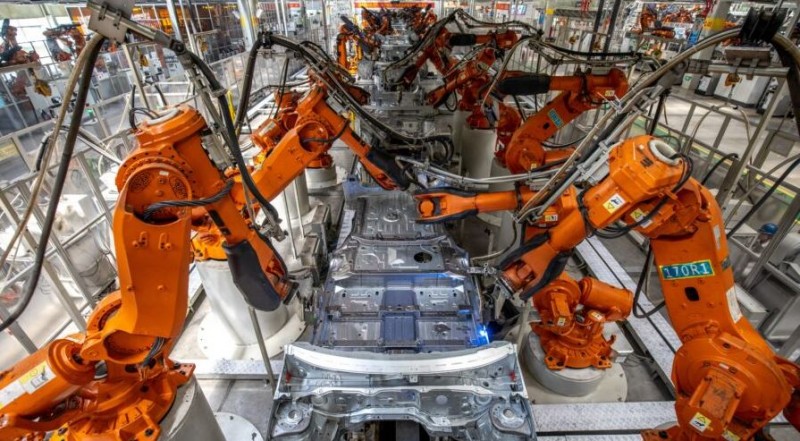
The rapid advancements in technology have had a profound impact on the workforce across various industries. One significant development that has garnered a lot of attention is workforce automation. The integration of automation technologies into the workplace has the potential to reshape how businesses operate and create new opportunities for both employers and employees. However, along with these opportunities, there are also challenges that need to be addressed. In this article, we will explore the future of workforce automation, discussing the opportunities it presents as well as the challenges that need to be overcome.
1. Introduction
Workforce automation refers to the integration of technology and machinery to perform tasks that were previously done by humans. It involves the use of artificial intelligence (AI), robotics, machine learning, and other advanced technologies to automate repetitive or labor-intensive processes. Workforce automation has the potential to revolutionize industries and redefine job roles, leading to increased efficiency, improved productivity, and new opportunities for businesses.
2. Understanding Workforce Automation
Workforce automation encompasses a wide range of technologies and applications. These include robotic process automation (RPA), which automates repetitive tasks and data entry, machine learning algorithms that can analyze and process vast amounts of data, and AI-powered systems that can understand natural language and make decisions. These technologies can be integrated into various industries such as manufacturing, healthcare, finance, transportation, and customer service, among others.
3. The Opportunities of Workforce Automation
3.1 Increased Efficiency and Productivity
One of the primary benefits of workforce automation is the potential for increased efficiency and productivity. By automating repetitive tasks, businesses can free up their workforce to focus on more complex and creative endeavors. Automation can perform tasks faster and with greater accuracy, reducing errors and improving overall productivity.
3.2 Job Enhancement and Task Offloading
Contrary to popular belief, workforce automation doesn't necessarily mean job replacement. Instead, it can enhance existing job roles by offloading mundane and repetitive tasks to machines. This allows employees to engage in more meaningful work that requires critical thinking, problem-solving, and creativity. Automation can complement human skills and capabilities, leading to a more efficient and productive workforce.
3.3 Improved Workplace Safety
Automation can also contribute to improved workplace safety. By automating hazardous or physically demanding tasks, businesses can reduce the risk of workplace accidents and injuries. Robots and AI-powered systems can operate in dangerous environments or handle toxic substances, ensuring the safety and well-being of human workers.
3.4 Enhanced Data Analytics
Workforce automation generates vast amounts of data that can be leveraged for valuable insights. Automation technologies can collect, analyze, and interpret data in real-time, enabling businesses to make data-driven decisions. This enhanced data analytics capability can lead to improved operational efficiency, better customer experiences, and more accurate forecasting.
3.5 Streamlined Decision-Making Processes
Automation technologies can streamline decision-making processes by providing accurate and timely information. AI algorithms can analyze data, identify patterns, and make predictions, assisting managers in making informed decisions. This can lead to more efficient and effective decision-making, resulting in better outcomes for businesses.
4. The Challenges of Workforce Automation
While the opportunities presented by workforce automation are significant, there are also challenges that need to be addressed.
4.1 Job Displacement and Reskilling
One of the primary concerns associated with workforce automation is the potential displacement of jobs. As automation technologies replace certain tasks and job roles, there is a risk of unemployment for some workers. To address this challenge, proactive measures need to be taken, such as reskilling and upskilling programs to equip employees with new skills that are in demand in the automated workforce.
4.2 Ethical Considerations
Automation raises ethical considerations regarding privacy, data security, and the impact on society as a whole. Businesses must ensure that automation technologies are implemented responsibly, with appropriate safeguards in place. Ethical frameworks and guidelines need to be established to govern the use of automation and protect the rights and well-being of workers.
4.3 Integration and Adaptability
Implementing workforce automation requires careful planning and integration with existing systems and processes. Businesses need to assess their current infrastructure and determine how automation can be seamlessly integrated. Additionally, the workforce must be adaptable and open to embracing new technologies and ways of working to fully leverage the benefits of automation.
4.4 Cybersecurity Risks
As automation technologies become more prevalent, the risk of cybersecurity threats also increases. Connected devices and systems can be vulnerable to hacking and data breaches. It is crucial for businesses to invest in robust cybersecurity measures to protect sensitive information and ensure the integrity of automated systems.
4.5 Work-Life Balance and Well-being
Automation has the potential to blur the boundaries between work and personal life. With increased connectivity and the ability to work remotely, employees may face challenges in maintaining a healthy work-life balance. It is essential for businesses to promote work-life balance, prioritize employee well-being, and establish policies that support the mental and physical health of their workforce.
5. The Future of Workforce Automation
The future of workforce automation is promising, with ongoing advancements in technology and increasing adoption by businesses. As automation becomes more integrated into various industries, it will continue to reshape job roles and create new opportunities. To navigate this future successfully, businesses and individuals must embrace continuous learning, adaptability, and a proactive approach to skill development.
6. Conclusion
Workforce automation presents a myriad of opportunities for businesses and employees alike. It can drive increased efficiency, productivity, and safety while enabling better decision-making and enhanced data analytics. However, it also poses challenges such as job displacement, ethical considerations, integration complexity, cybersecurity risks, and work-life balance issues. By addressing these challenges proactively and responsibly, businesses can harness the full potential of workforce automation while ensuring a positive and sustainable future of work.
SC Grants Ashish Mishra Extended Interim Bail Amidst Lakhimpur Kheri Violence
Massive Strange Shelf Cloud Appears In Haridwar, Details Inside
Supreme Court's Landmark Decision: Stays Arrest of Lawyer in Manipur